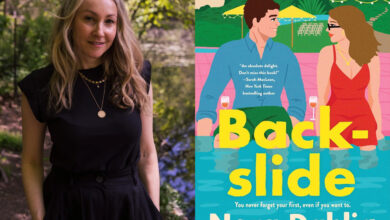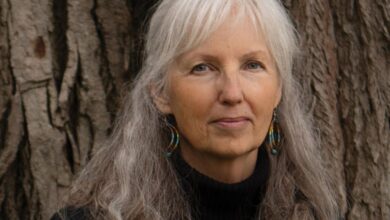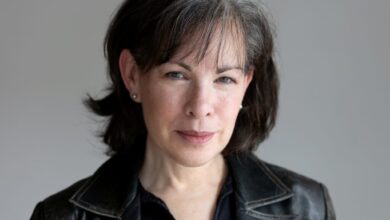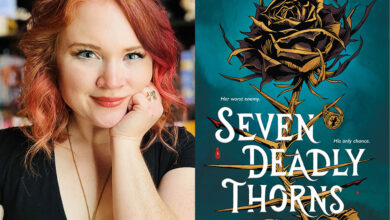Sing Me a Circle author Samina Najmi is illuminated by Bapsi Sidhwa – debutiful
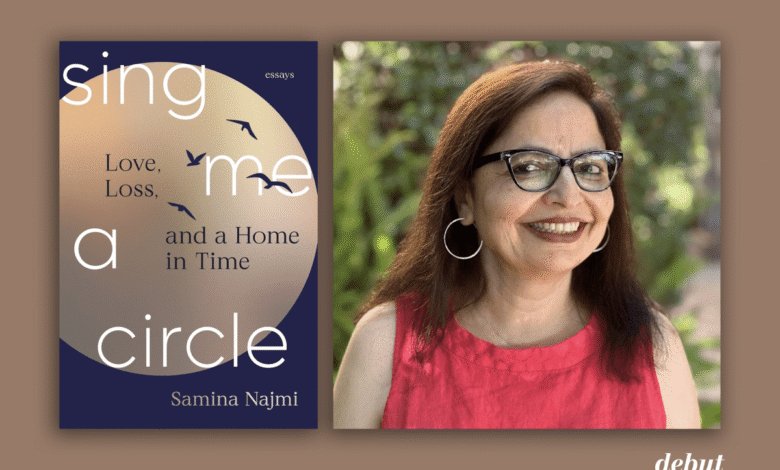
In her debut memoir-in-essays, Sing Me a Circle, Samina Najmi traces her life across Pakistan, England, and the United States, reflecting on the people, places, and stories that shape her vision of the world. Through essays on memory, displacement, and the enduring ties of family, Najmi forges an identity as a professor, mother, and writer.
We asked Najmi to answer our recurring My Reading Life Q&A so readers could get to know the books that shaped her life and what influenced her memoir.
What was the first book you were obsessed with as a child?
It was probably one of Enid Blyton’s Noddy series. Although Urdu is my first language, English is my first language of literacy, as my parents moved to England in 1966, when I was three years old. They didn’t have much disposable income, but I remember the thrill of those rare occasions when I received a Noddy book. I loved how they looked, first of all. Hardcover, and such pretty colors on the dust jacket. I’d crack them open and smell the pages. The world of Noddy and Big Ears engaged me, though it was short on female characters. It combined a simple, everyday world with magic, and the problems that arose were resolved in community. I loved Tessie Bear best, and I’m sure her gender had everything to do with it. My mother made me a teddy bear when I was six, and I called her Tessie. The loss of my Tessie in the move back to Pakistan remains salient in my mind.
What book helped you through puberty?
While other girls were reading Mills and Boon romances, I was an avid reader of two kinds of books. Agatha Christie’s murder mysteries, for one. I don’t know what the connection to puberty is, but there had been huge changes in my life; we had recently moved back to Karachi, Pakistan, and I was uncertain of my place. Agatha Christie’s detective novels opened up a gripping world that was, like the Noddy books, both familiar and extraordinary. While they presented challenges, I was assured of a fair, logical, and satisfying resolution. A puzzle solved. I also loved Christie’s prose and her characters. Cat Among the Pigeons stands out in memory, probably because it was focused on schoolgirls. The other kind of book that helped me through puberty was Enid Blyton’s Malory Towers series, centered on a boarding school for girls. I loved the idea of a community of girls experiencing the world together with few interventions by authority figures, and finding subversive ways around the rules.
What book do you think all teenagers should be assigned in school?
I think this depends in great part on time and place. Since my own children are now in their twenties and I teach university students, I’m not as knowledgeable about young adult literature as I’d like to be. But given where we are at this moment in time in the US, Arthur Miller’s play The Crucible should be a must-read for every teenager. Miller, writing in the 1950s, harked back to the Salem Witch Trials of 1692 to make his point and develop his themes: silencing and betrayal in a climate of fear, and the cost of resistance.
If you were to teach a class on Damn Good Writing, what books would make the syllabus?
That list would be long! If the semester were long enough, the syllabus would likely include:
- Gloria Anzaldúa, Borderlands: La Frontera
- James Baldwin, Giovanni’s Room
- Eula Biss, No Man’s Land: American Essays
- George Eliot, Middlemarch
- Louise Erdrich, Love Medicine
- Maxine Hong Kingston, The Woman Warrior
- Primo Levi, Survival in Auschwitz
- Paule Marshall, Brown Girl, Brownstones
- N. Scott Momaday, The Names
- Manuel Muñoz, The Faith Healer of Olive Avenue
- Naomi Shihab Nye, You & Yours
- Tommy Orange, There There
- Bapsi Sidhwa, Cracking India
- Leslie Marmon Silko, Storyteller
- Leo Tolstoy, Anna Karenina and/or War and Peace
- Mark Twain, Life on the Mississippi and/or Letters from the Earth
What books helped guide you while writing your book?
My answer to this question overlaps with the previous one. I was guided by all the readings that have made an impact on me over the years. They include, most notably, Paule Marshall’s Brown Girl, Brownstones, N. Scott Momaday’s The Names, Maxine Hong Kingston’s The Woman Warrior, and Manuel Muñoz’s The Faith Healer of Olive Avenue. I have also learned immensely from Naomi Shihab Nye’s poetry, in particular her 2005 collection, You & Yours, which links the micro to the macro and the local to the global. And Bapsi Sidhwa’s Cracking India has a special place in my heart and my writing life. As an anglophone Pakistani American writer alive to the legacy of the 1947 Partition of India, I have found Sidhwa’s novel to illuminate the road for me through time.
What books are on your nightstand now?
Mona Susan Power’s novel A Council of Dolls, which I’m very excited to teach this semester. And two nonfiction debuts from this year, alongside which Poets & Writers places Sing Me a Circle. They are both memoirs: Erika Simpson’s This Is Your Mother and Sarah Aziza’s The Hollow Half. Gorgeous, heartbreaking books.
Source link

